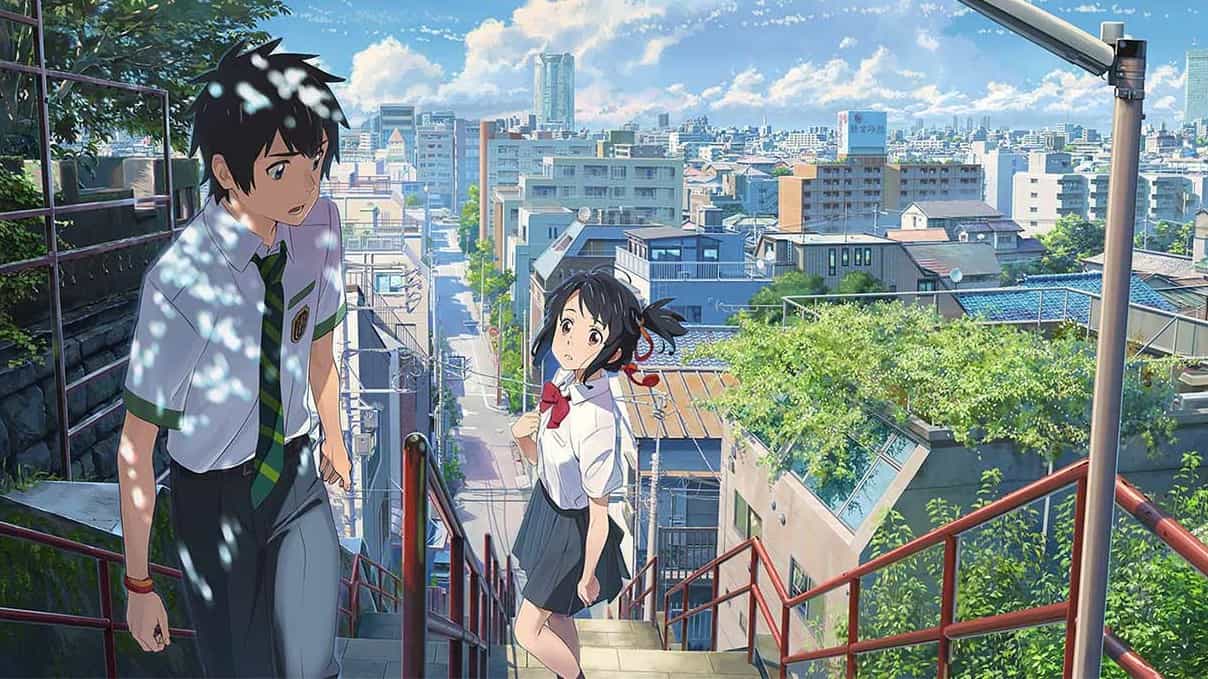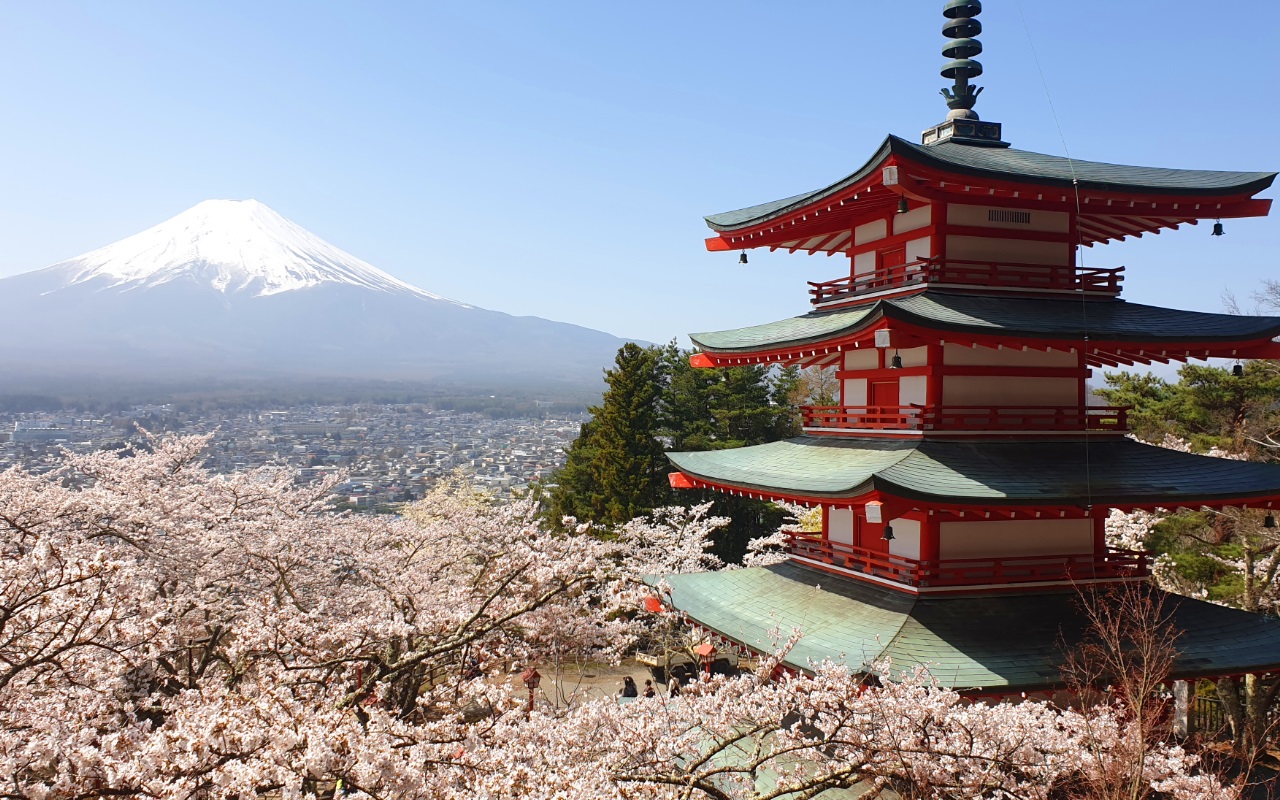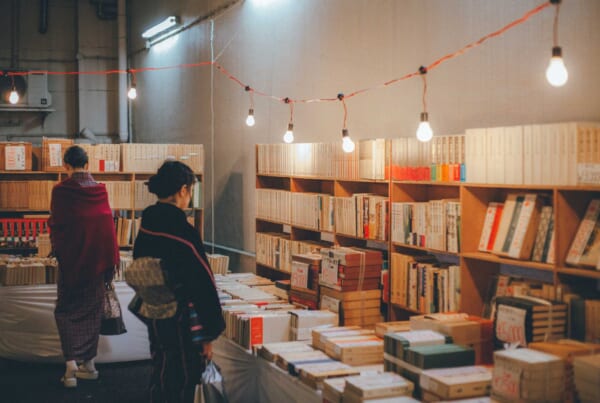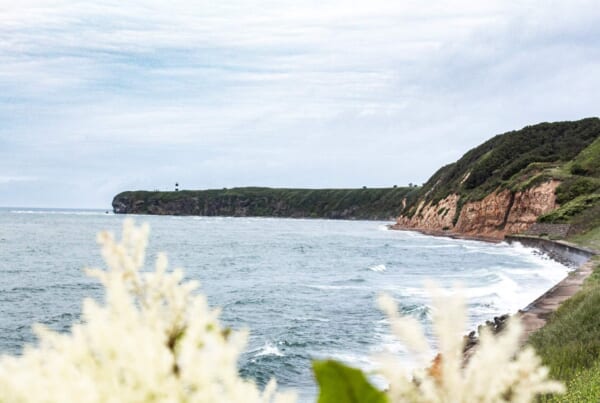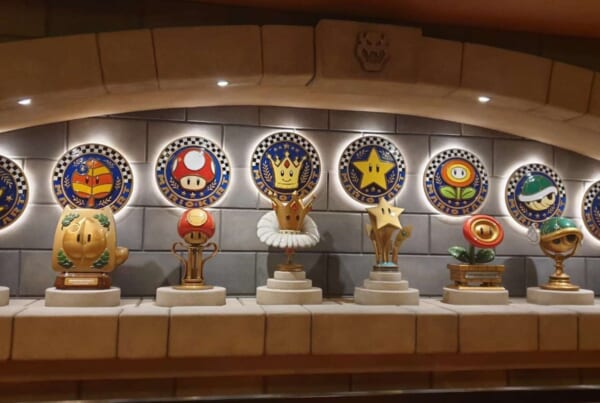You’d have to have been hiding under a rock in 2016 not to have heard of Your Name (君の名は, Kimi no Na wa), one of the biggest hits of Japanese animation in recent years, Studio Ghibli’s permitted. An untimely juvenile love story halfway between the Japanese Tanabata myth and the magical realism of Haruki Murakami (of whom Shinkai is a confessed admirer), whose depiction of nostalgia and existential longing captivated audiences around the world.
One of the outstanding aspects of director Makoto Shinkai is the extreme faithfulness in representing the real locations and scenarios in which the story is based. So much so that his films have worked wonders as promoters of local tourism to visit all those places that audiences have seen on the silver screen as a way to immerse themselves in the story within the real world.
The anime industry is one of the greatest ambassadors of Japanese popular culture, whose success has been reflected in the exponential growth of the international market compared to the domestic market. According to the latest report published by AJA (The Association of Japanese Animations), while the domestic market growth has stagnated over the last decade, the international market keeps on growing, highly likely to surpass the former in a few years.

It’s no secret that much local and international tourism in Japan is fueled by manga and anime fans. Even in Spain, we had a taste of this phenomenon when thousands of Japanese people flocked to the town of Cuenca when they found out it was the inspiration for the setting of an anime series. The concept of “pilgrimage” in the world of manga and anime has been a solidly established practice for years, which has also recently spread to other spheres, like the tourist craze triggered by a popular video game. Thus, talking about the social and economic effects of fiction in Japan takes on new dimensions beyond simply discussing consumption data in terms of readership or viewership.
What real places does the film Your Name draw inspiration from?
On more than one occasion, Shinkai had expressed his fascination with the city of Tokyo, which he first visited from his native Nagano when he finished high school. More than two decades later, his fresh vision of the great Japanese Metropolis continues to win over audiences, not just for his emotionally charged stories but also for allowing us to see it through his eyes. This time he draws on his childhood experiences growing up in Nagano to depict the charm of the countryside and the beauty of the mountainous landscape.
Is it possible to visit Your Name locations in Japan?
The vast majority of locations exist just as depicted and can be visited without any problems. The only exception is Itomori, Mitsuha’s hometown, which is completely fictional. However, that doesn’t mean that its appearance is not inspired by places that do exist. Next, we will take a detailed tour of all the identified locations so far.
Tokyo Locations from the movie
The events taking place from the young Taki’s point of view correspond to the city of Tokyo, particularly the Shinjuku and Minato areas, two of the most central spots concentrating a large part of the most emblematic locations. As for Shinkai, there is also a special reason why Shinjuku frequently appears in his works. It was the first place he saw when he visited Tokyo for the first time in his youth. Thus, the author shares a piece of himself from those nostalgic emotions with the audience through Mitsuha’s awestruck attitude upon arriving in Shinjuku.
View of Koshu Kaido Avenue in front of Shinjuku Station
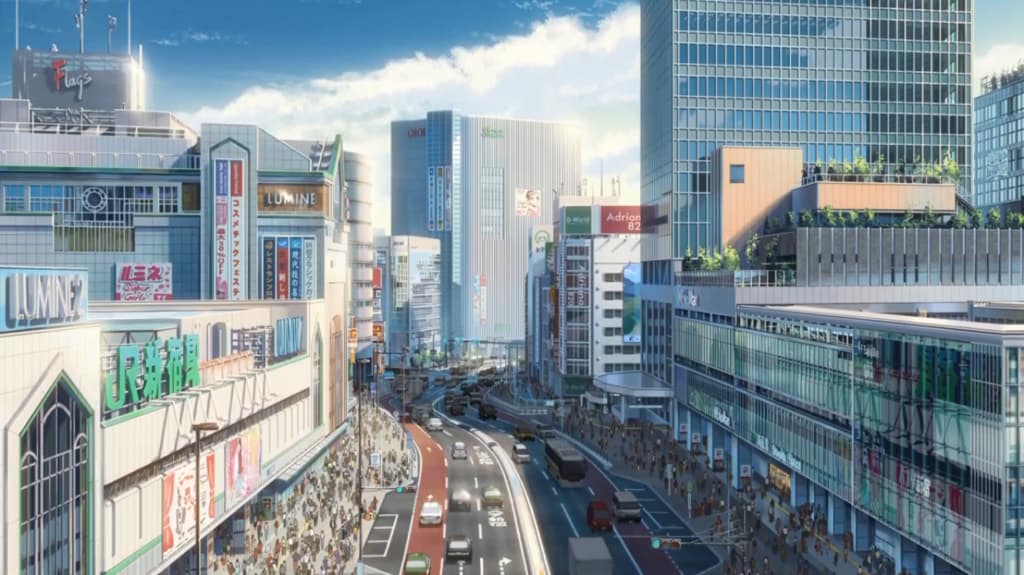
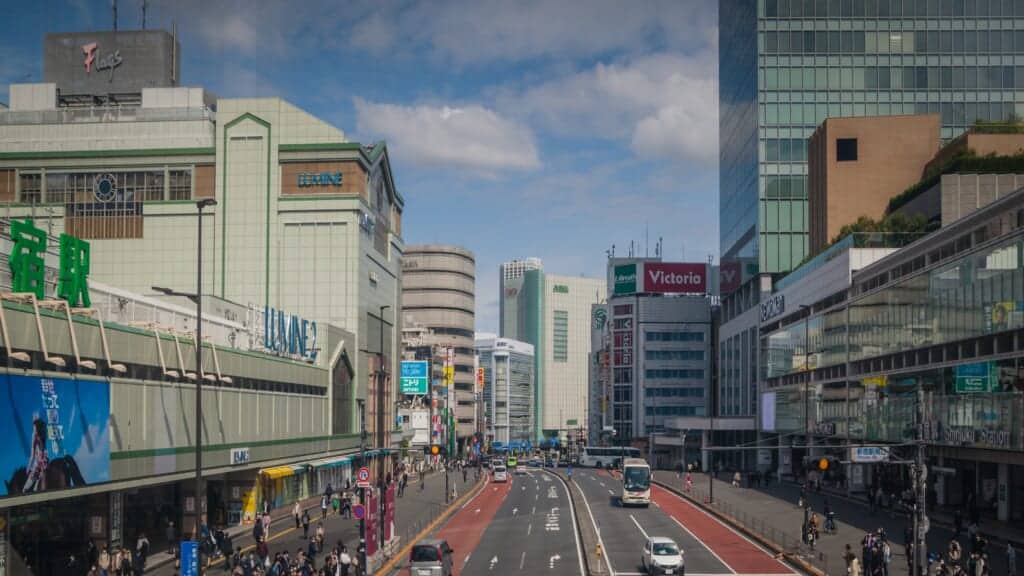
Shinjuku Station is one of the busiest nodes in the city. A plethora of public transportation lines converge at this titanic station, which is surrounded by many offices and shops. Here on Google maps, we can see one of the entrances to the station, on the side that faces Koshu-Kaido Avenue, one of the most important in the city because it matches the historical route of the same name, one of the five routes that connected the old Edo with the rest of the provinces.
The Shinjuku intersection at Kita Dori Avenue
Nishi Shinjuku (literally, Shinjuku West) is where you’ll find some of Tokyo’s best-known skyscrapers, making it a popular spot for architecture enthusiasts. This particular location is famous for its huge and peculiar circular structure that supports the various traffic lights and traffic signals.
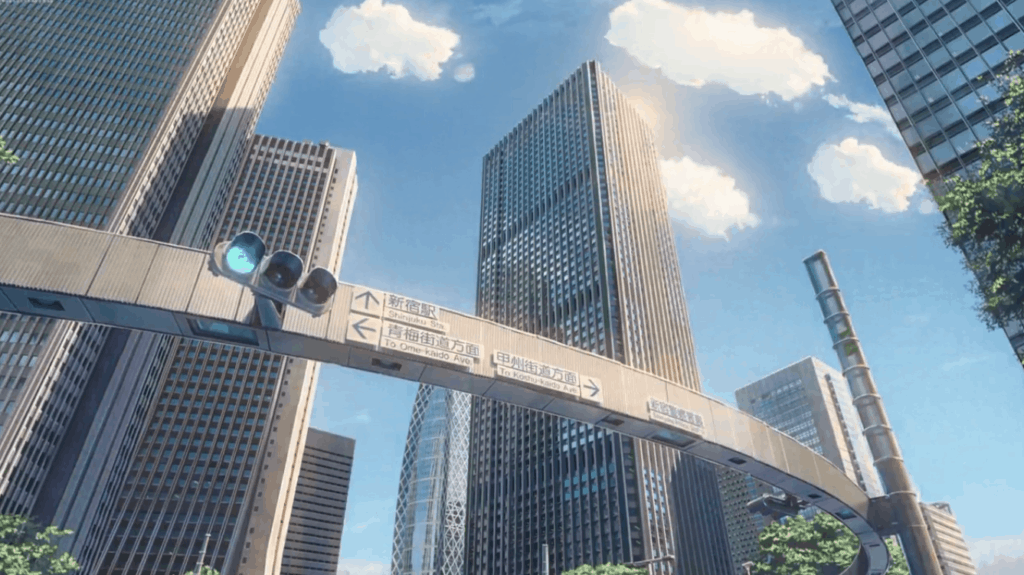
Yunika Vision
These huge advertising screens in front of Kabukicho are an important symbol in Shinjuku. In operation since 2010, it’s a large advertising platform that also broadcasts some live events (in the film they appear broadcasting live coverage of comet Tiamat). They are located exactly here.
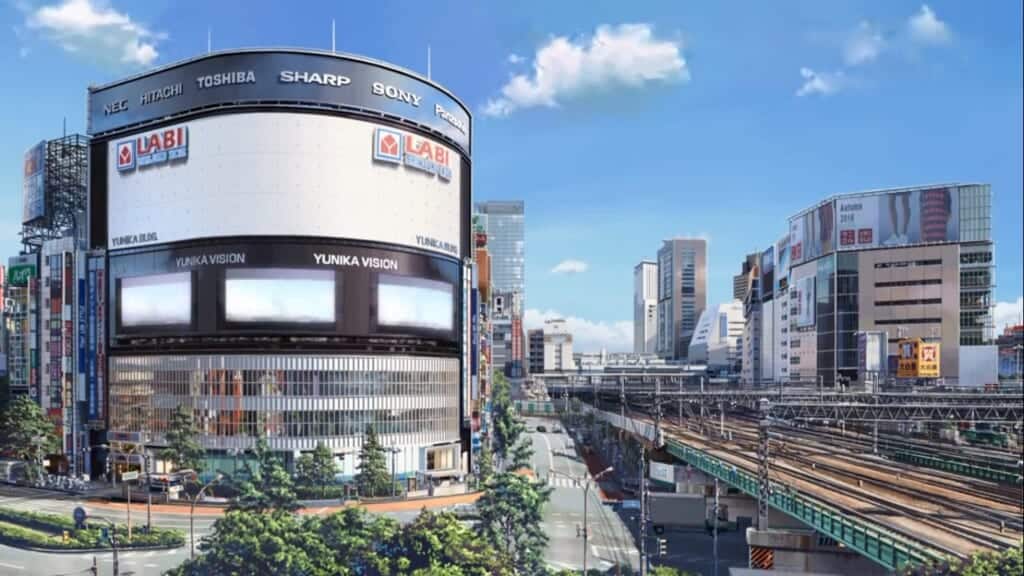
NTT Docomo Yoyogi Building
Unlike other famous skyscrapers in the city, the NTT Docomo tower is not open to the public. But its eye-catching architecture and nighttime lighting have made it one of the most recognizable landmarks in all of Tokyo since its opening.
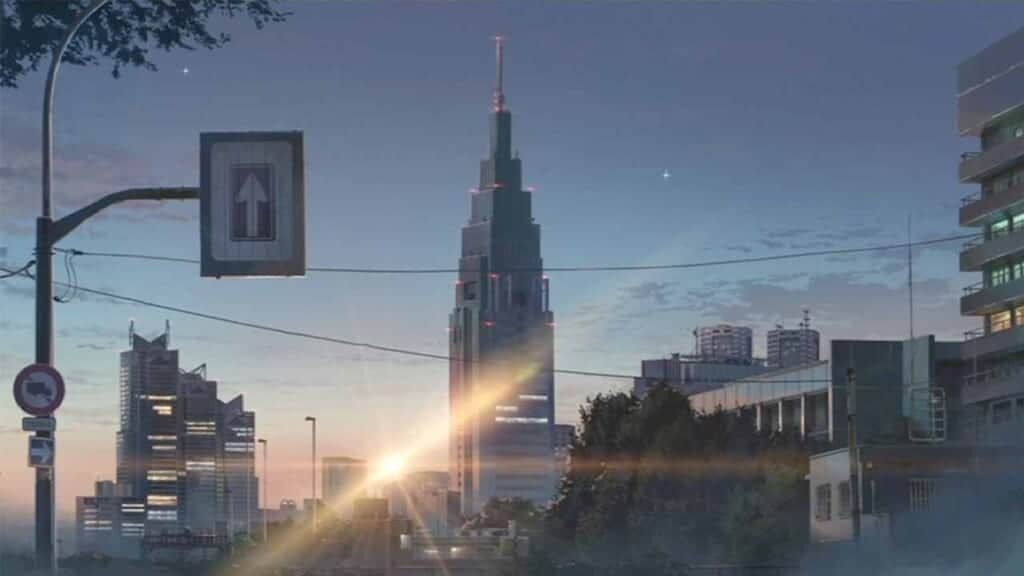
Il Giardino Delle Parole (Cafe la Boheme)
The Italian restaurant where Taki works part-time is an almost exact copy of Cafe la Bohème, except for the design of the entrance and the fact that it’s located on a quiet street with hardly any traffic, unlike its fictional counterpart. The location of this restaurant is also significant, as it’s right in front of Shinjuku Gyoen, the beautiful park where the better part of the scenes of The Garden of Words, a film also directed by Shinkai, take place.
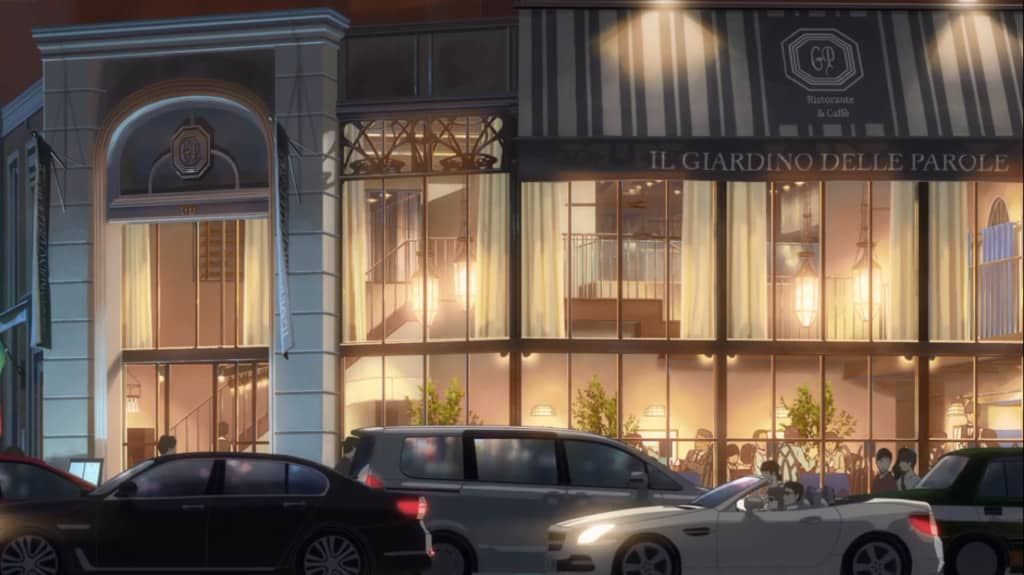
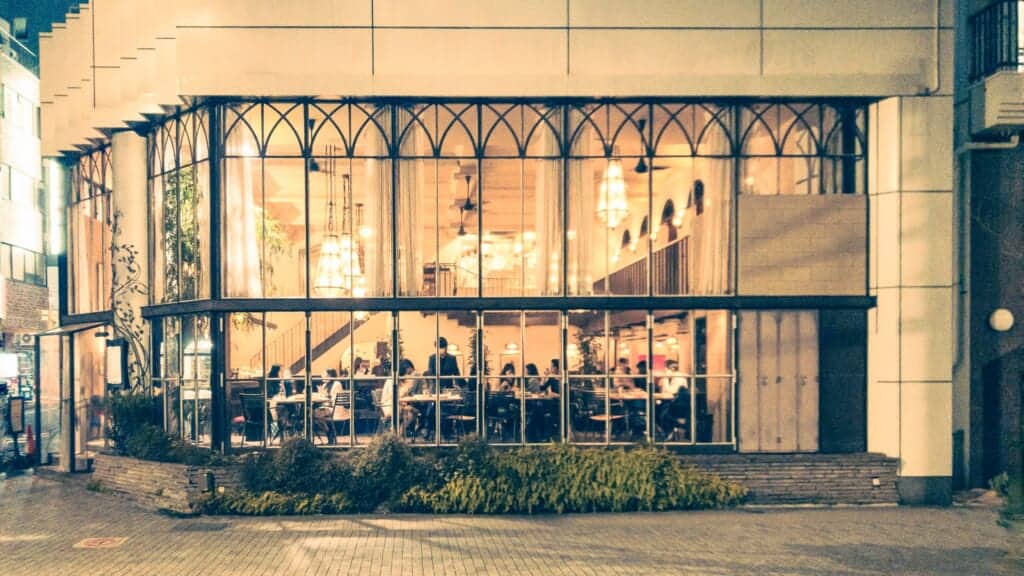
Starbucks at Shibuya Crossing
It is probably the most famous Starbucks in all of Japan because of its strategic location on the larger-than-life Shibuya Scramble crossing. Taki and Okudera-senpai share a good time in the window seats overlooking said crossing, providing them with one of the most coveted tourist views.
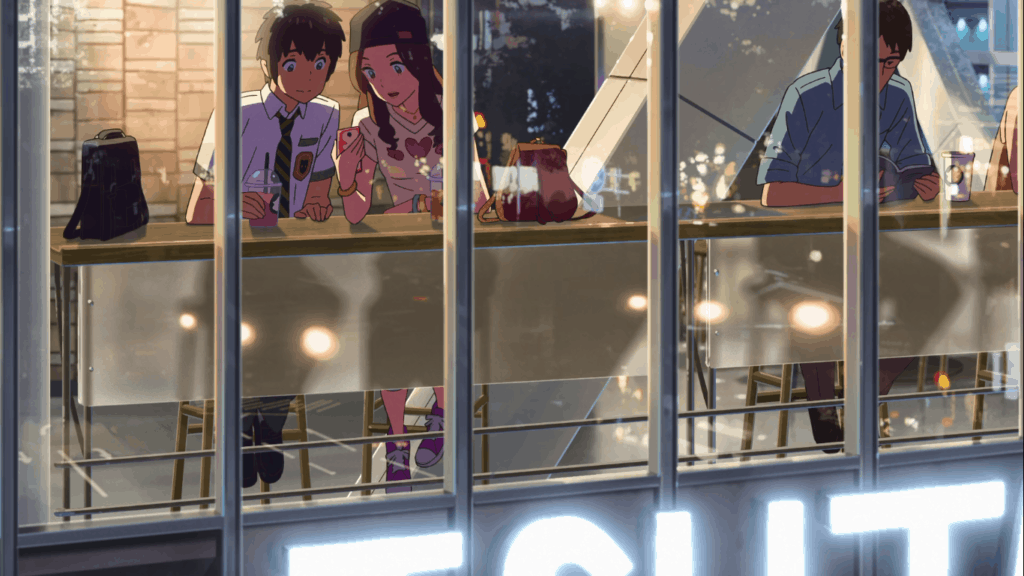
Yotsuya Station
This is where Taki comes hurriedly to meet Okudera-senpai on the day of their date. From the story events, it transpires that this is the area where Taki lives.
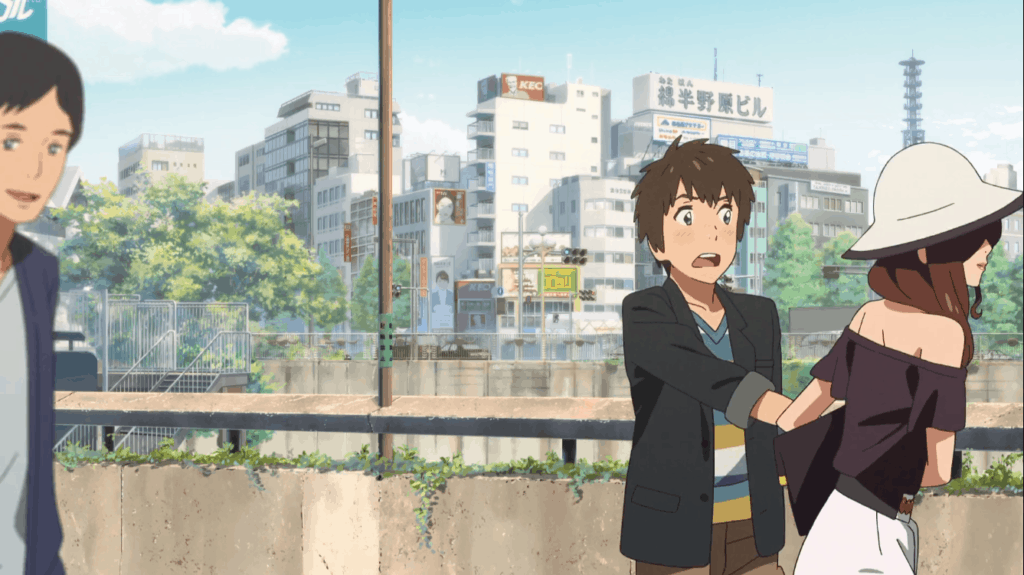
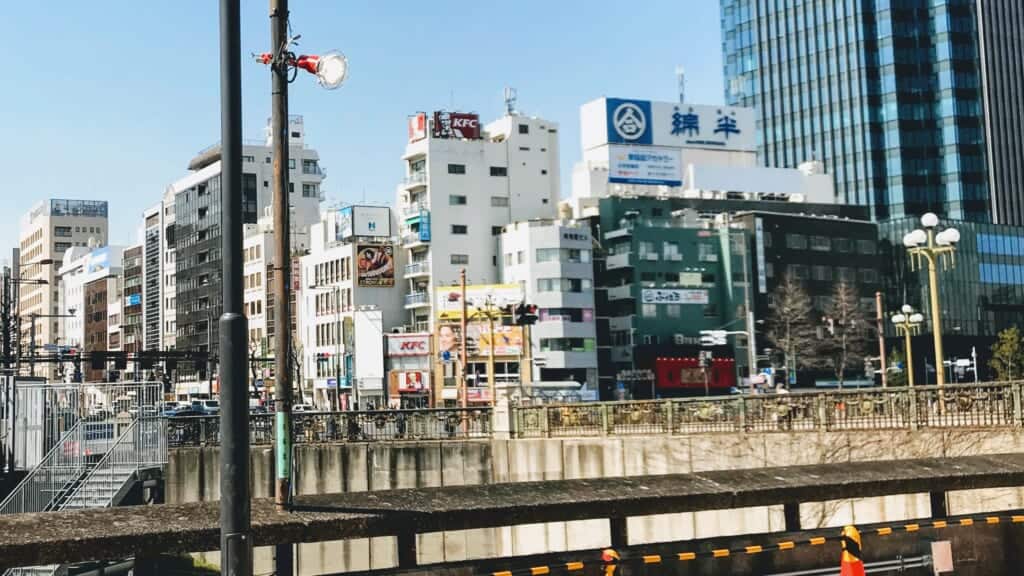
Tokyo City View and SkyDeck
One of the most popular observation decks in the city is located on the 52nd floor of the Roppongi Hills complex, where there are also stores, restaurants, and a small museum where there are often interesting exhibitions.
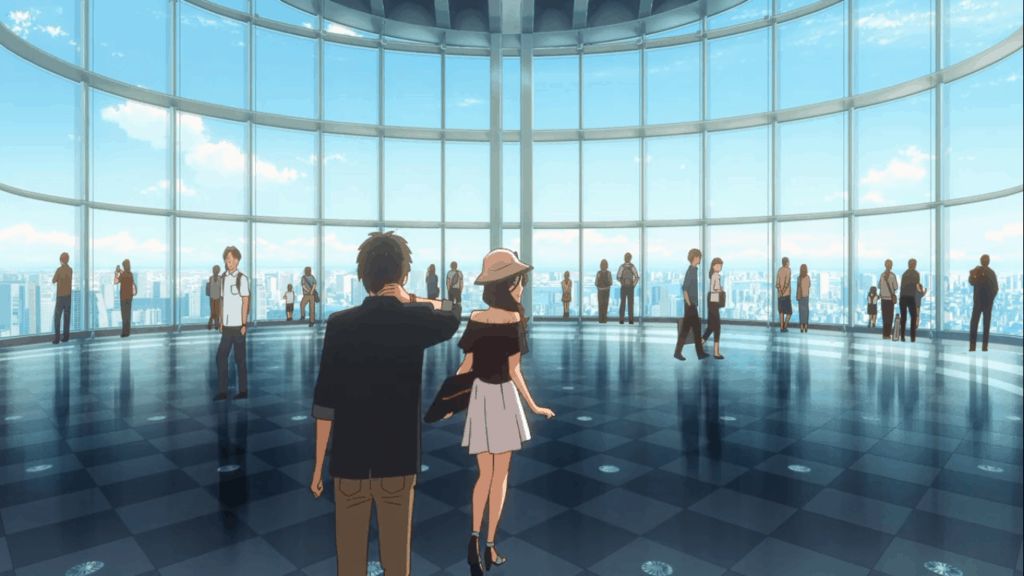
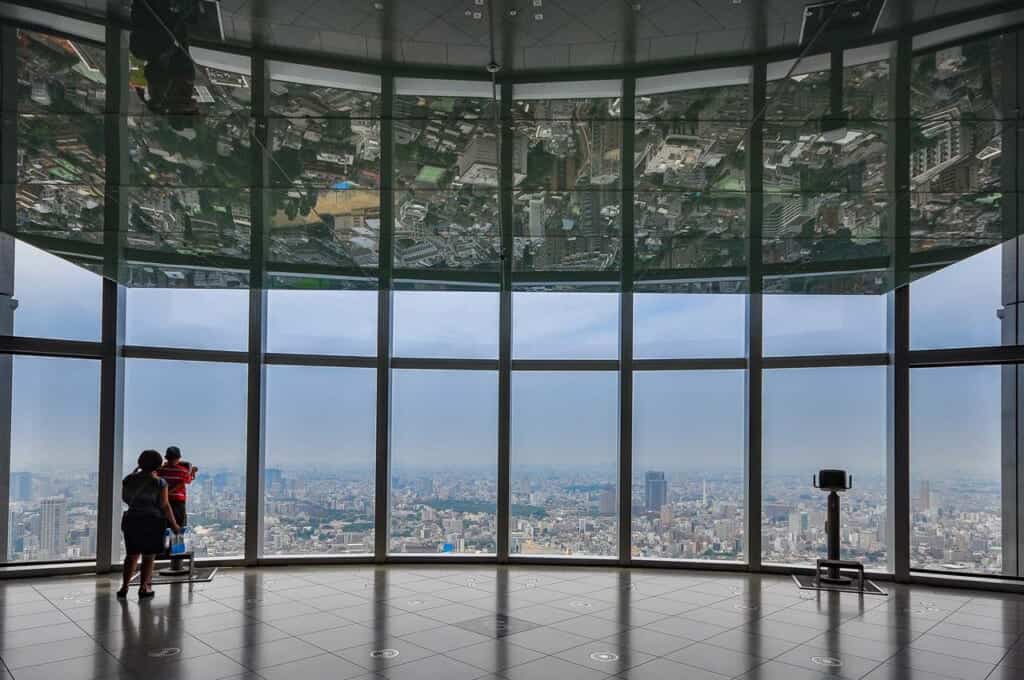
Salon de Thé Rond
This popular cafe is located within the premises of the National Art Center, designed by the extraordinary Kisho Kurokawa. Thanks to the striking building structure and its interesting exhibitions throughout the year, a must in the city for architecture or art lovers. For those who want to stroll or have a coffee, the restaurant is accessible without necessarily buying admission tickets for the exhibitions.
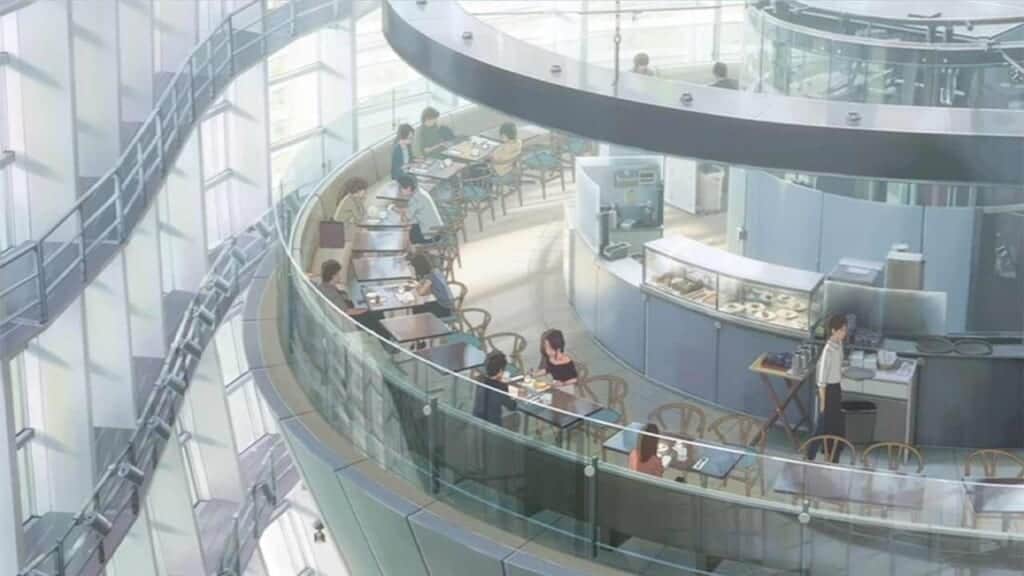
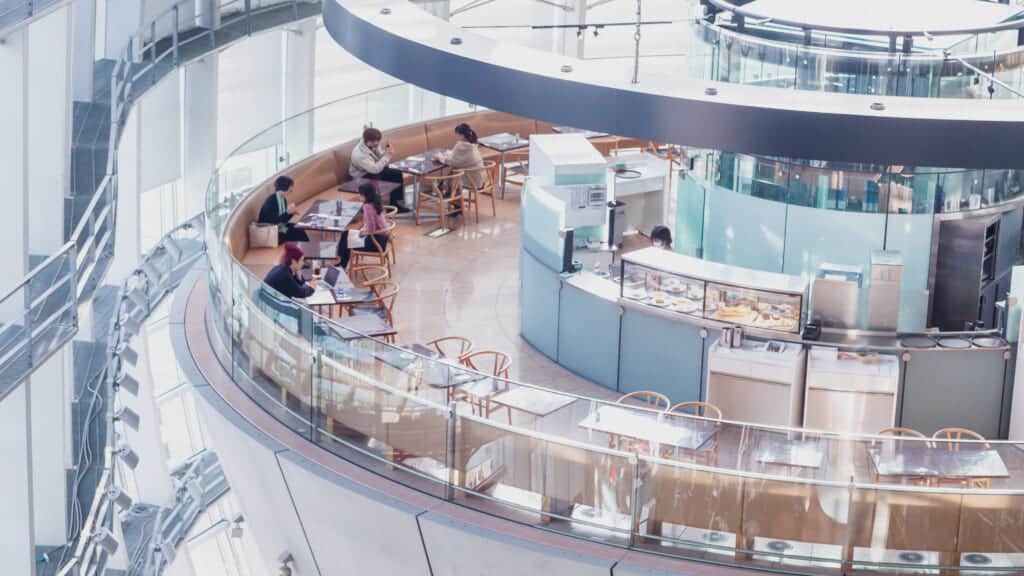
Shinanomachi Bridge
The Shinanomachi Bridge is located in the vicinity of Shinanomachi Station in Tokyo. This is where Taki realizes he can no longer contact his friend.
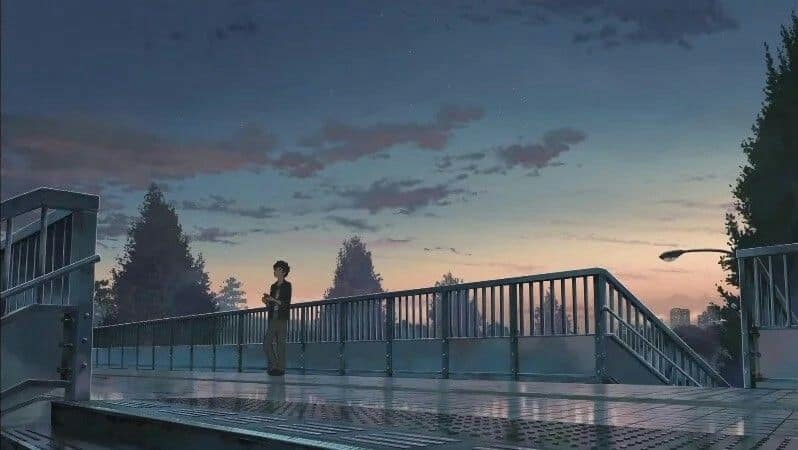
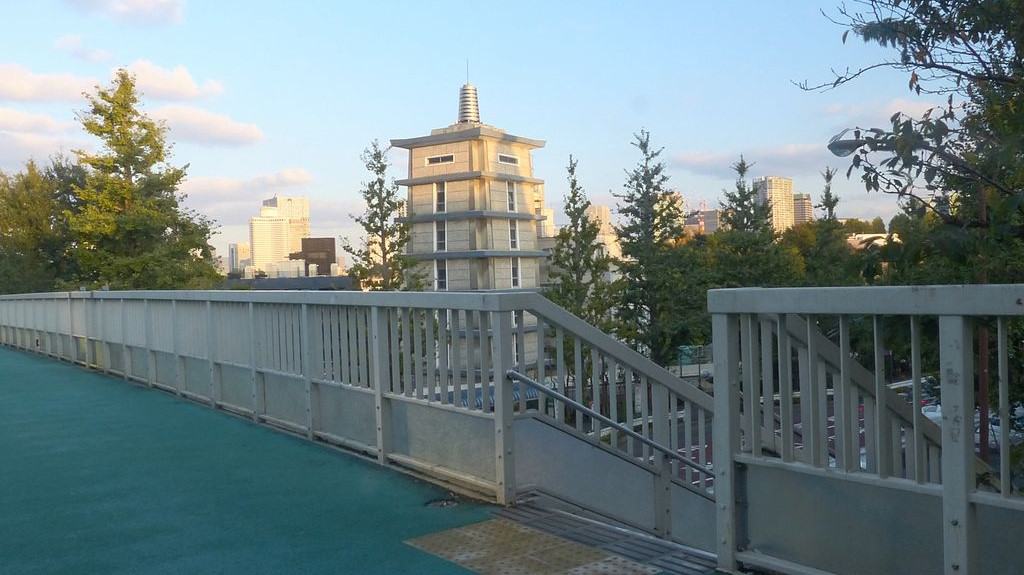
Shintoshin Bridge
This is the elevated pedestrian bridge in Shinjuku where Taki and Mitsuha cross paths one night without realizing it.
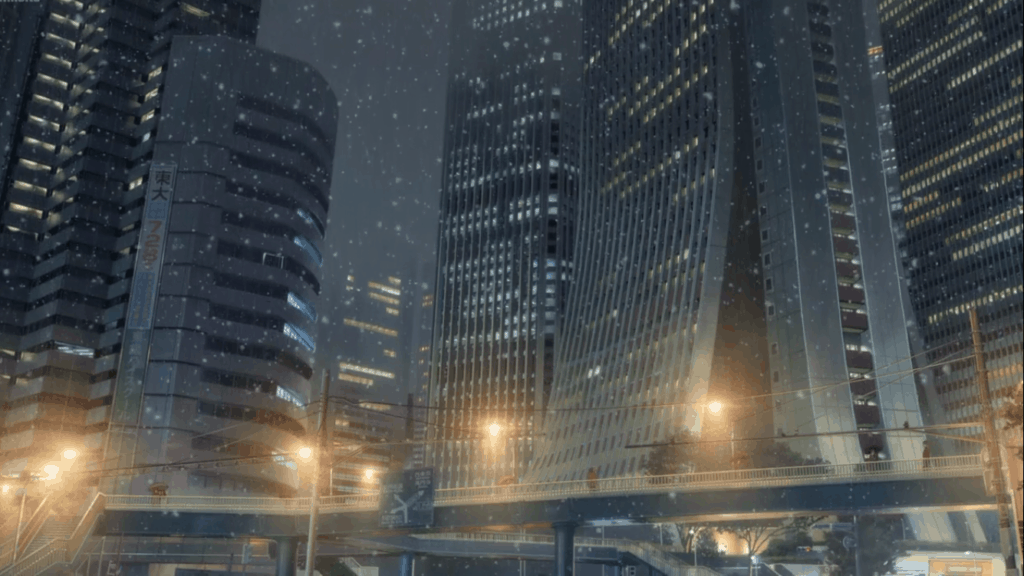
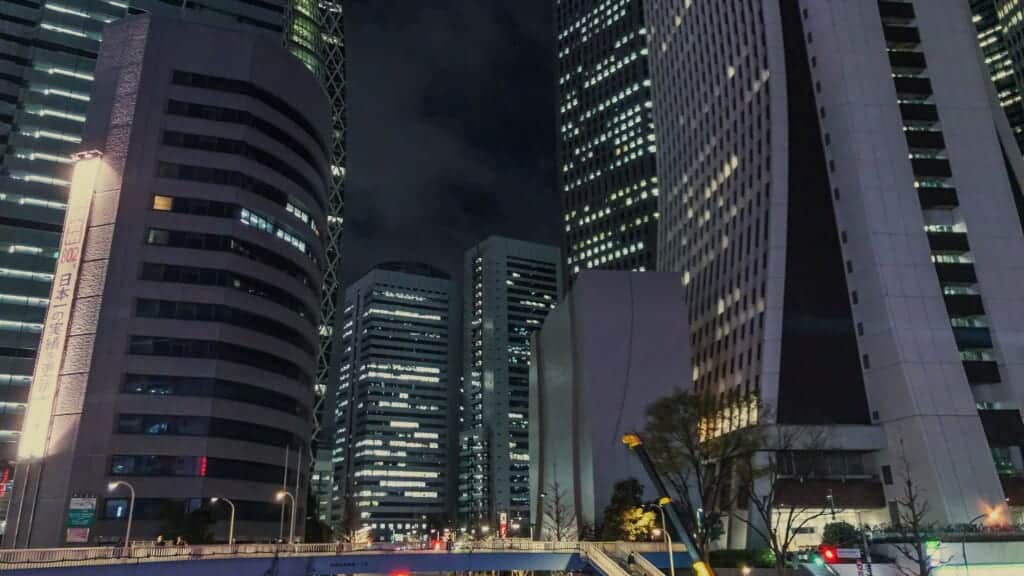
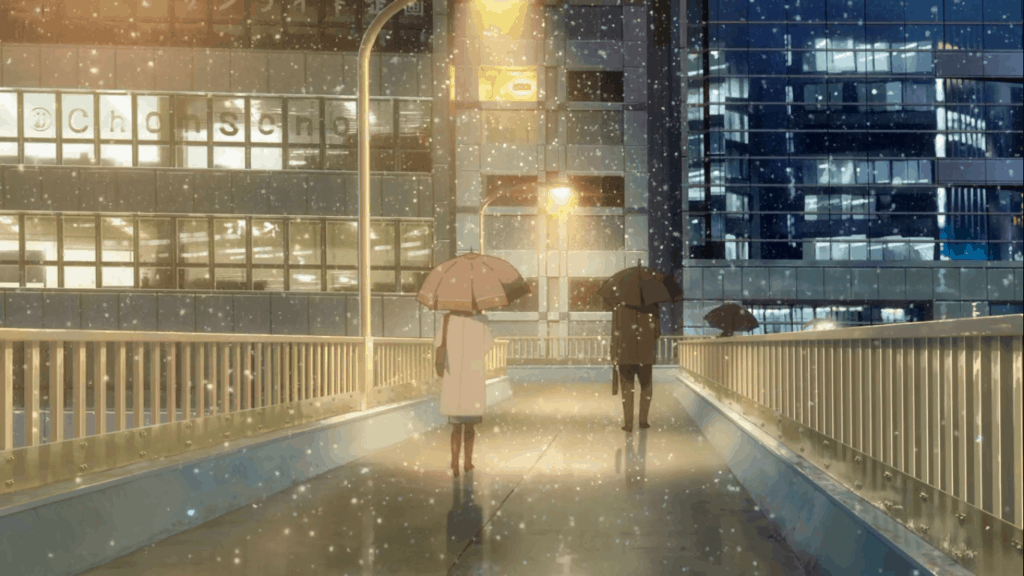
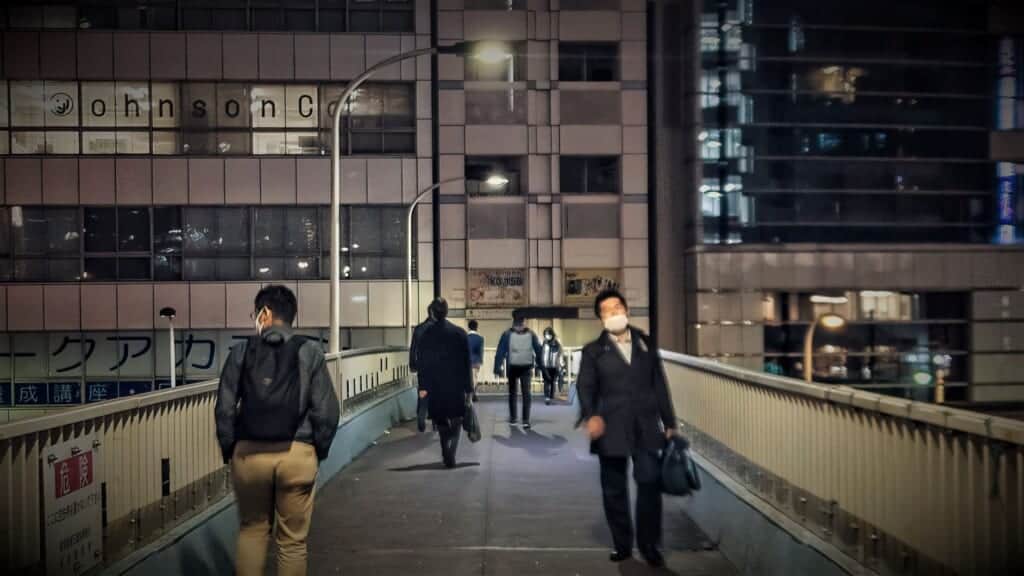
Tokyo Station
In addition to being one of the largest and most important stations in the city, the brick facade corresponding to the original structure of Tokyo Station is a very interesting example of late 19th and early 20th-century neo-baroque architecture. It’s from this station that Taki rides the bullet train with his friends to go in search of Mitsuha.
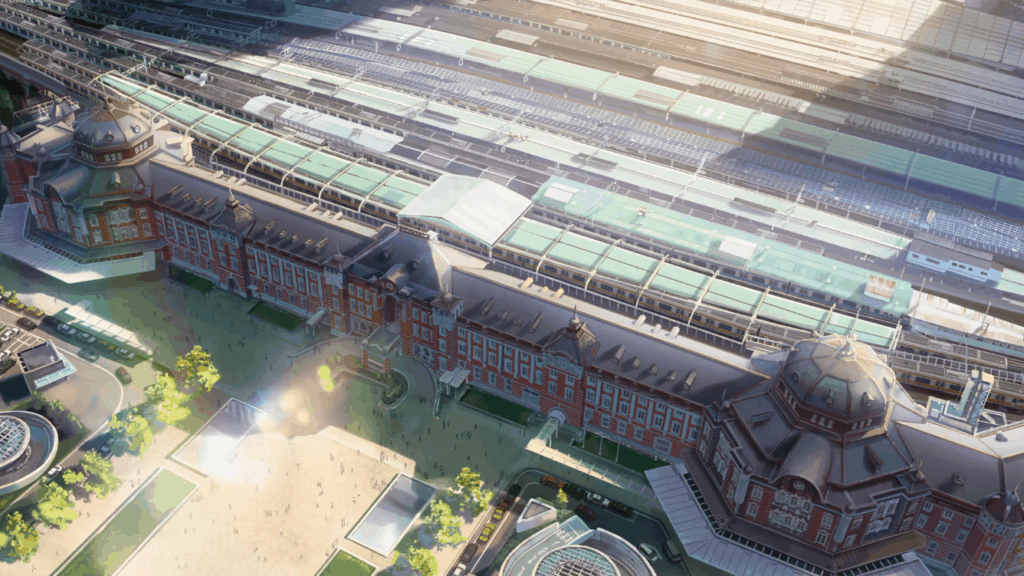
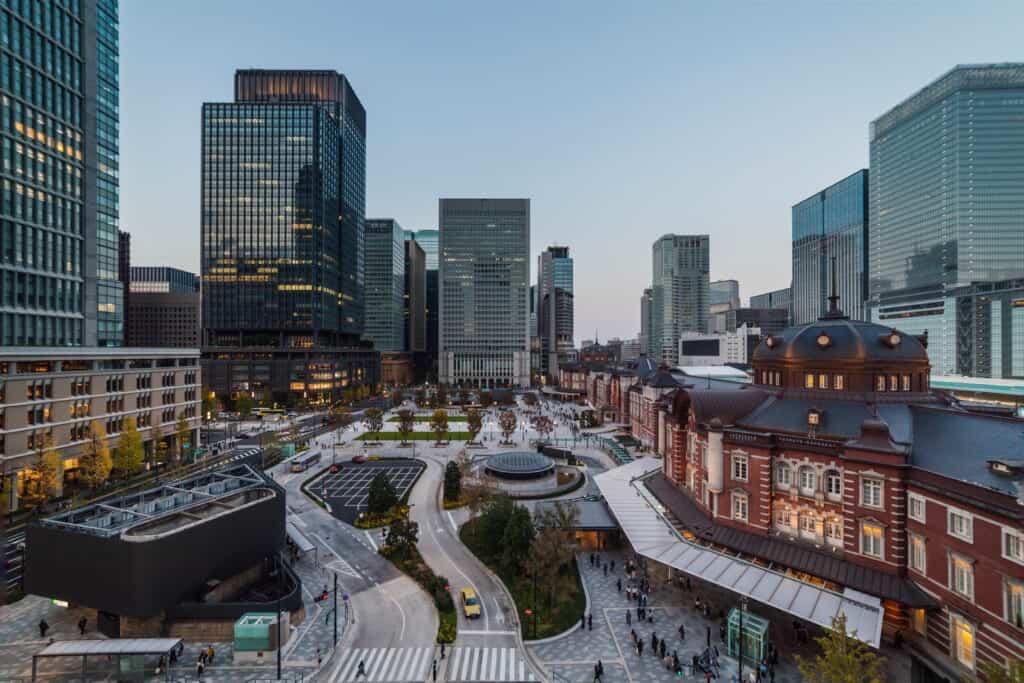
Your Name Stairs
We end the list of Tokyo locations with the now legendary stairs leading to Suga Shrine in Yotsuya. It’s a picturesque shrine in a residential area close enough to Shinjuku’s hustle and bustle while still remaining somewhat quiet, a sample of what these types of neighborhoods look like in Japan. It’s worth noting that even though it’s been a few years, it’s still common to find visitors taking photos at this iconic spot, for obvious reasons.
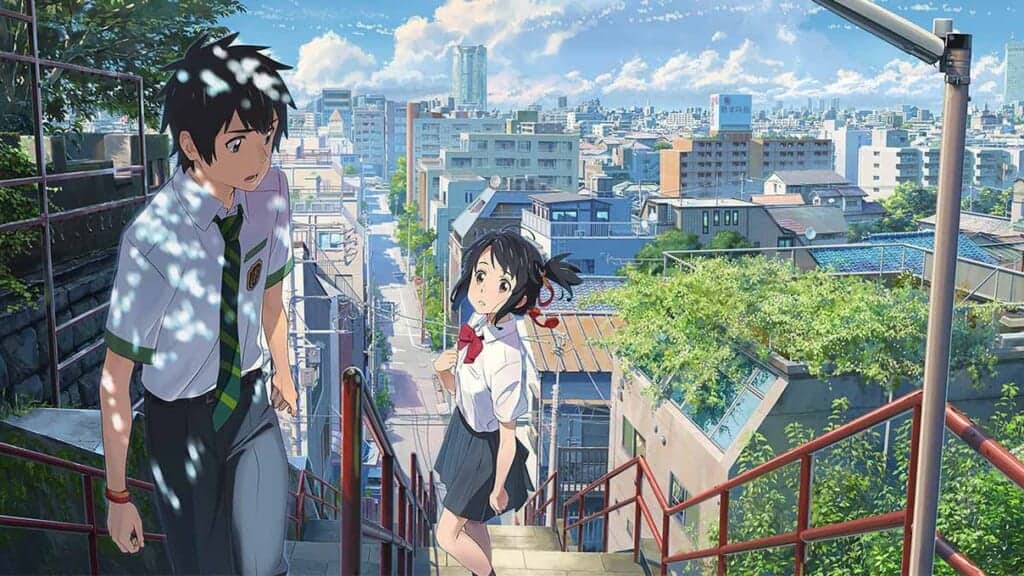
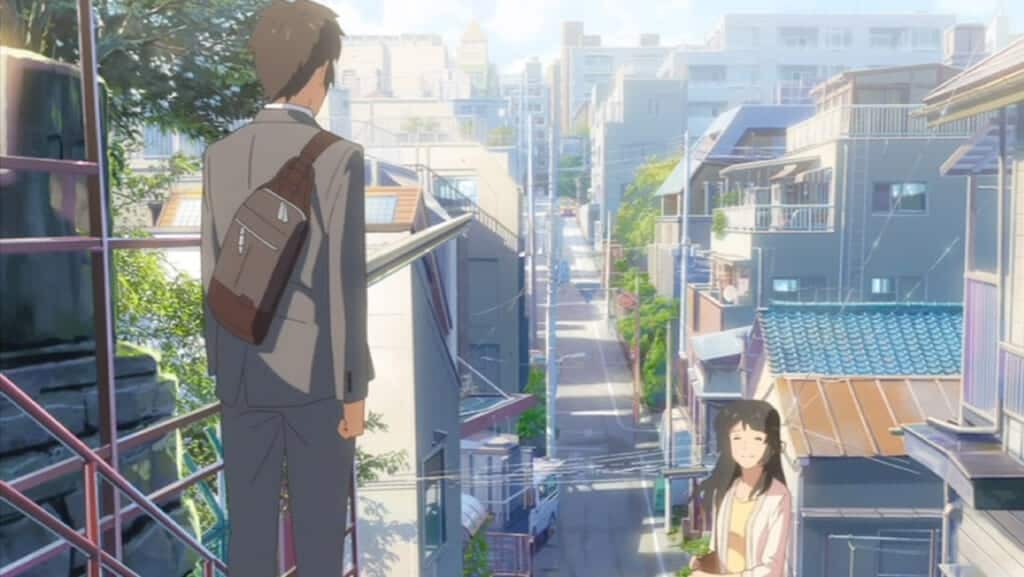
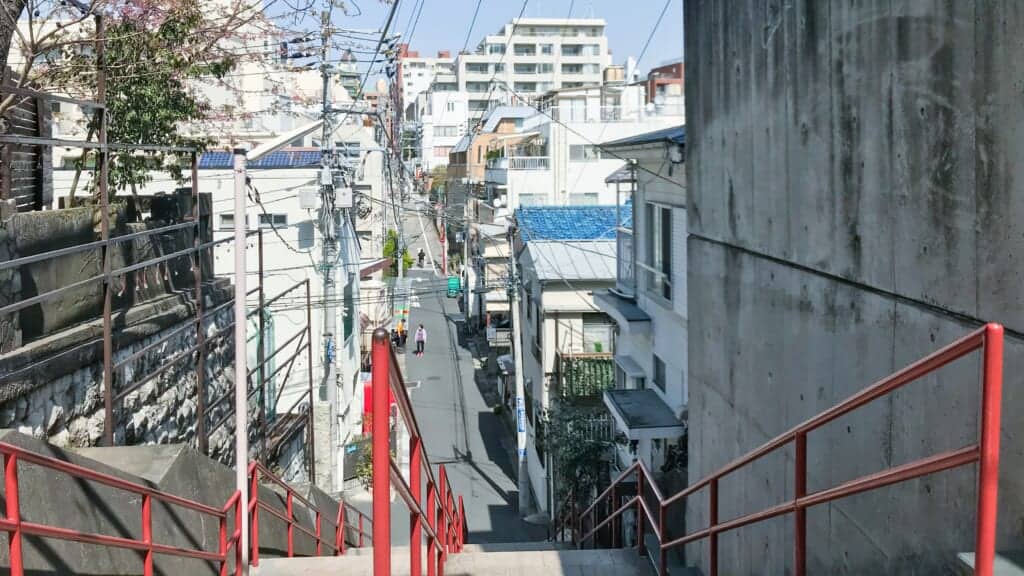
Locations in Aichi, Akita, Gifu and Nagano
Taki’s adventure in rural Japan showcases multiple locations that are especially concentrated in Hida, Gifu Prefecture.
The tourist impact on the Tokyo locations can be considered just another part of the steady trickle of tourists that the Japanese capital already enjoys. However, the effect in these remote regions has been comparatively more spectacular. Unexpectedly, the world’s spotlight was placed on several locations that were previously not as famous. For example, this interesting interview with the mayor of Hida highlights what happens, with its advantages and complications, when the tourism whirlwind suddenly decides to single you out. The tourism explosion experienced by many of these locations also brought some legal challenges to the table. When local governments wanted to capitalize on the media buzz around the film, they could only run unofficial campaigns. Any official tourism campaign presented issues in terms of copyright infringement. Naturally, this didn’t stop the pilgrim crowds from following their route.
The scenery from the Shinkansen
As expected, even the moment in the film when a landscape appears through the train window is a 100% real location. This view can be seen onboard the Tokaido Shinkansen during its passage through Toyokawa City in Aichi Prefecture. Since there’s no Street View from rail lines yet, the closest we can show is an approximate view passing over a nearby bridge in the same area. Note the detail of the tower and wind turbine.
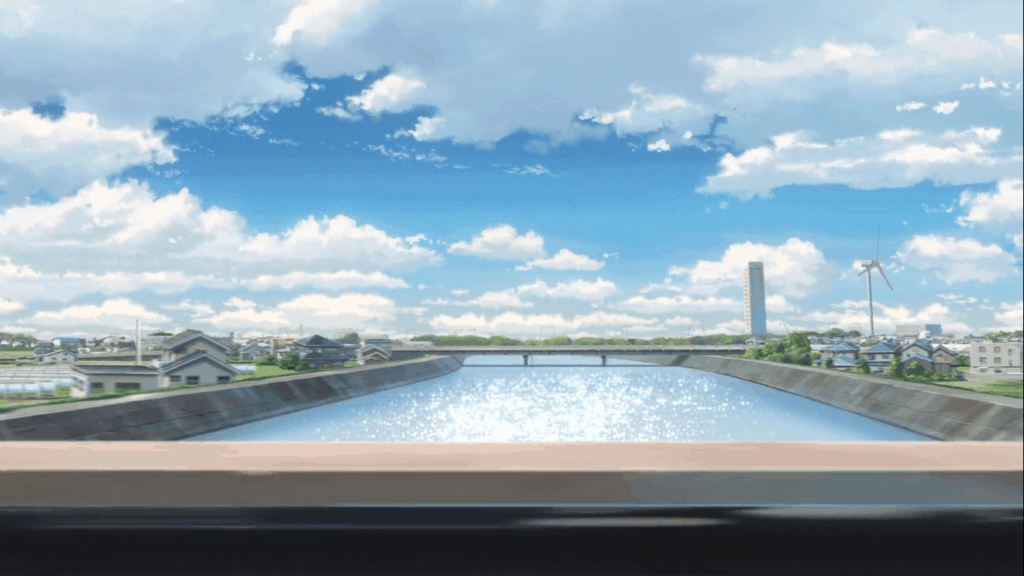
Hida Furukawa Station
The Hida Furukawa station is where Taki begins his search for Mitsuha in Gifu Prefecture. The representation is so faithful that if they swapped a movie frame for a photo, no one would notice.
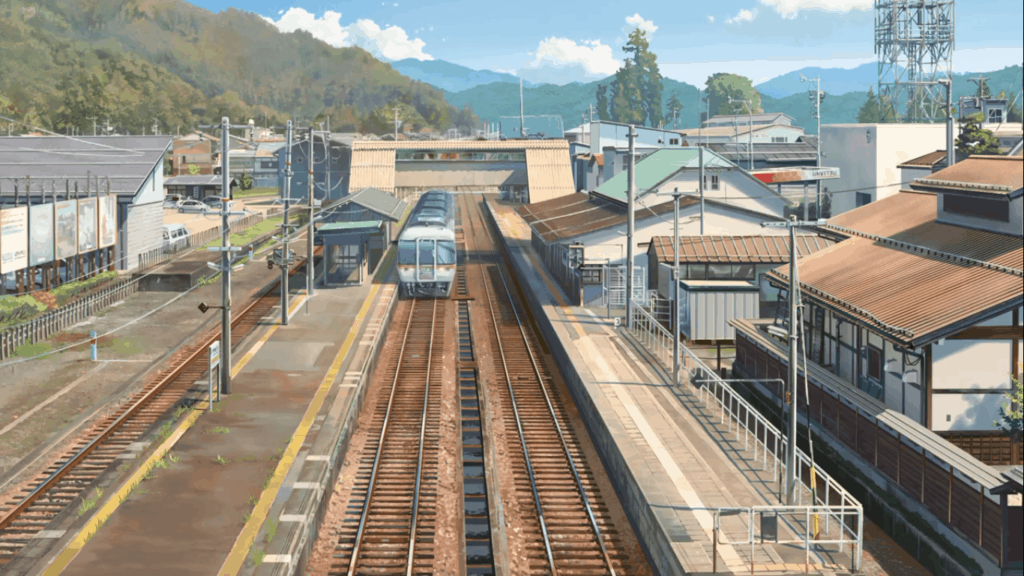
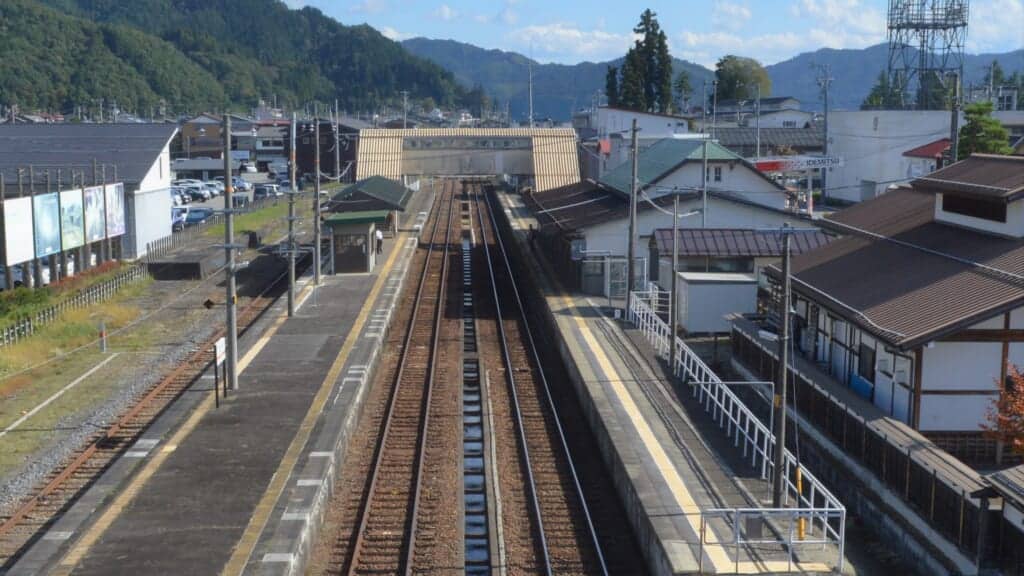
After leaving the station, a few meters away we find the city’s tourist information spot and the taxi stand.
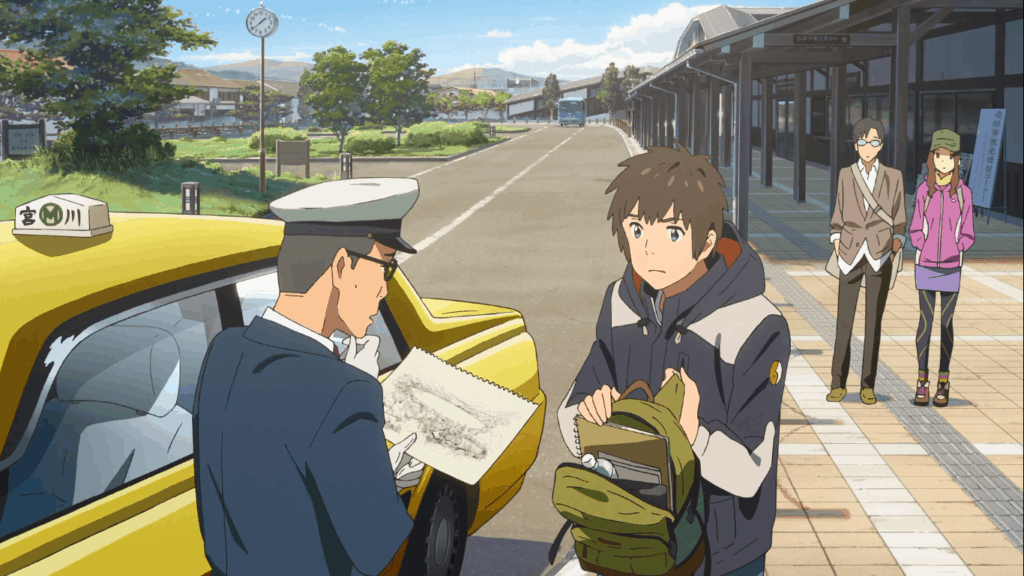
Bus stop
In case anyone had any doubts, this small but eye-catching bus stop really exists, another example of how far the eagerness for detail goes which is equally reciprocated by the city council. In the interview with the Hida mayor (linked above), he reveals, among other things, that they went the extra mile to improve the appearance of this stop. The photo comparison from different years of Google Street View shows that the pole with stop signage and the bus route was originally in another position and now it looks exactly the same.
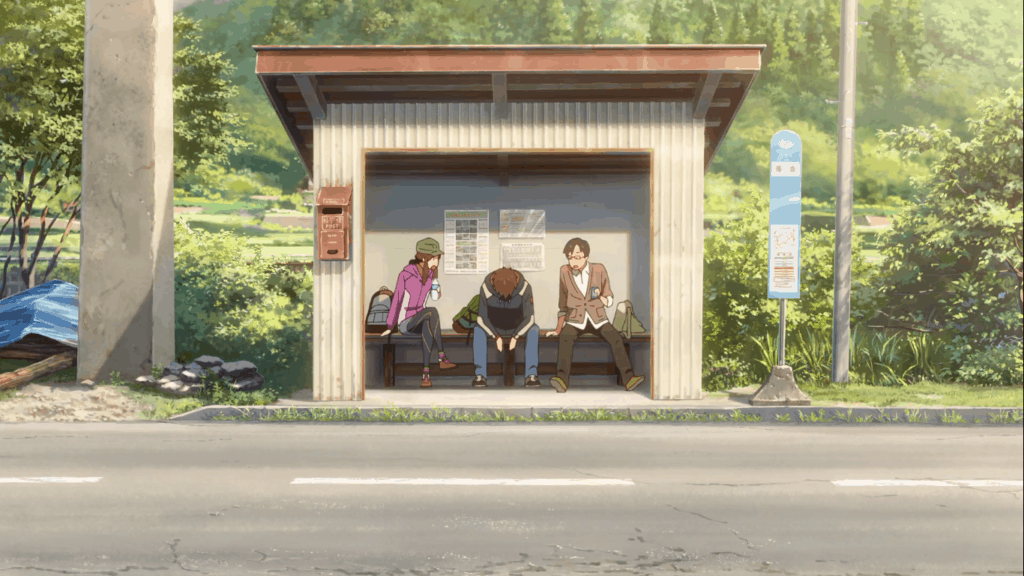
The ramen restaurant doesn’t exist, but its inspiration does.
To dispel any possible doubts, I have to confirm that the ramen joint where Taki receives the terrible news of the fate suffered by Mitsuha’s hometown doesn’t exist. But following one of the nearby roads from the station, we find a suspiciously similar house.
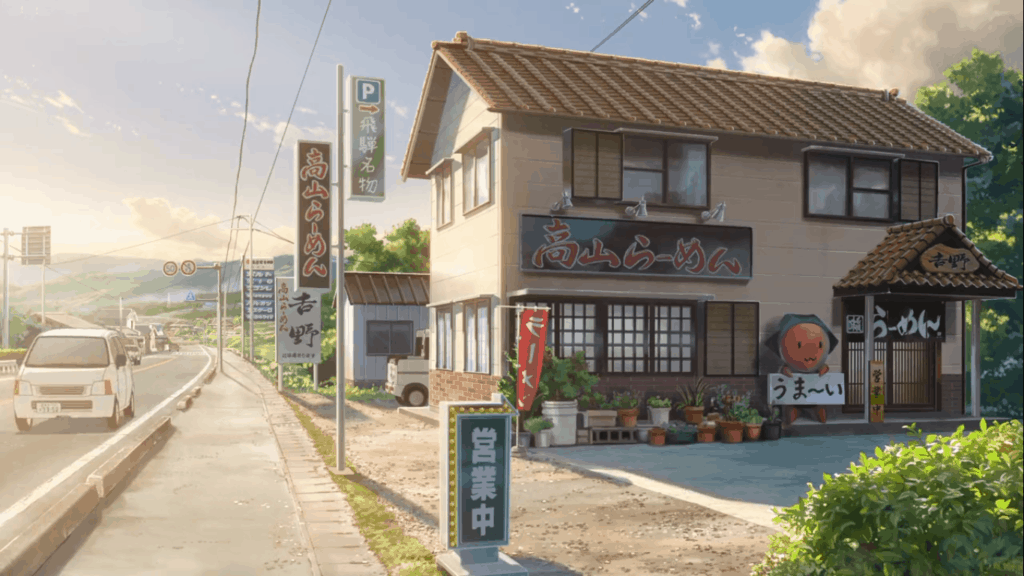
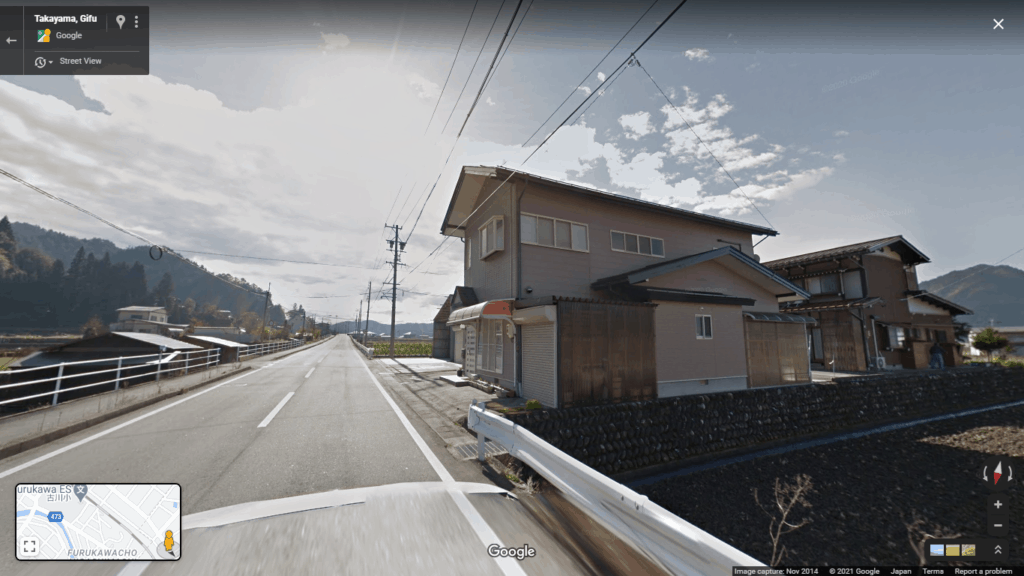
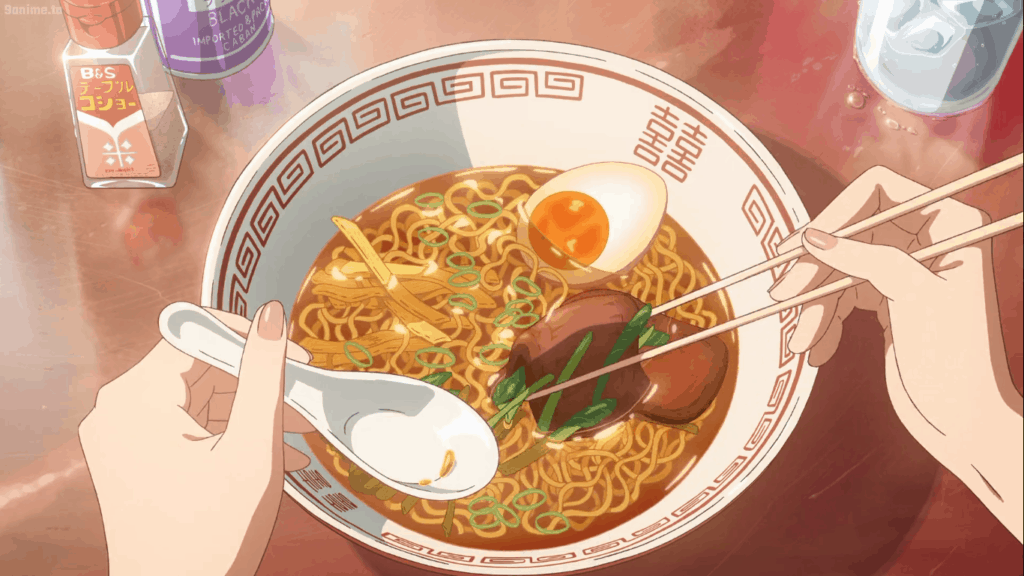
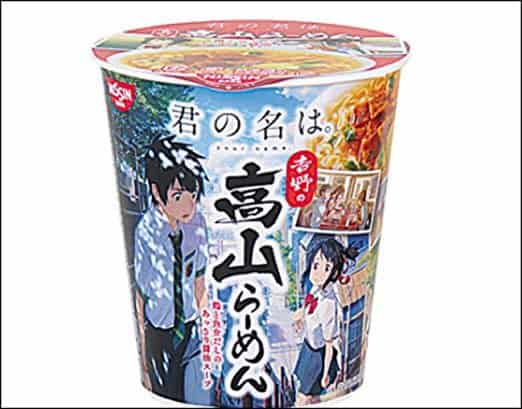
While there may not have been a specific restaurant, that doesn’t mean ramen joints in Takayama didn’t benefit from the influx of tourists eager to try the local variety, served with the renowned Hida beef.
Lake Suwa, the inspiration for Itomori
Given the tragic fate suffered by Itomori, Mitsuha’s village, it’s understandable that the author didn’t use the name of a real place. However, the appearance of the village is inspired by Lake Suwa in Nagano, the director’s home region.
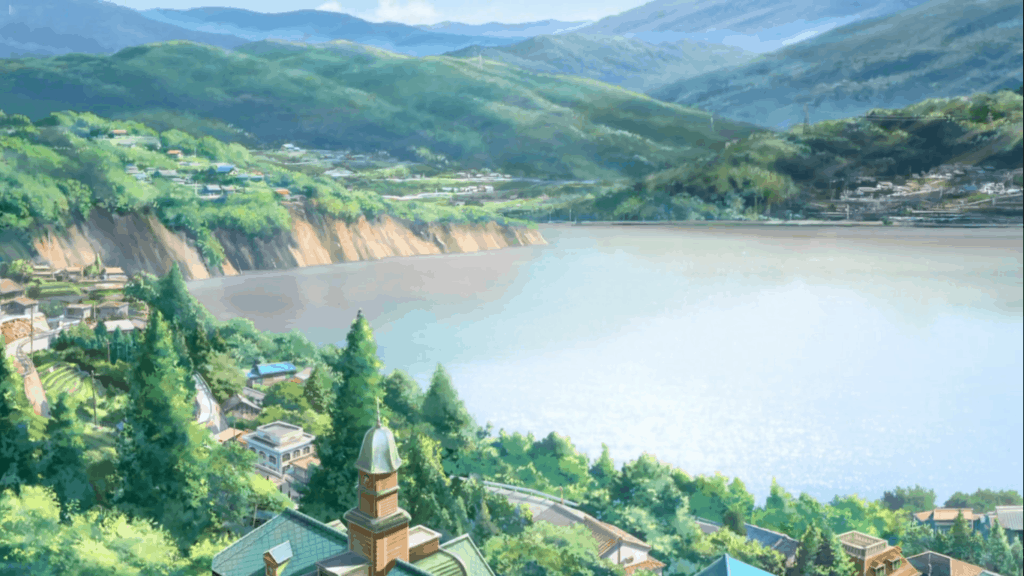
The lake views can be appreciated from Tateishi Park, a splendid place to enjoy the area’s scenery. An additional little detail is that near this park, there is a high school called Futaba. Coincidence or not, it happens to be the same name as Mitsuha’s late mother.
Hida City Library
The facade of the Hida City Library is also depicted albeit with some creative liberties, such as the window positioning or the addition of a sign that doesn’t actually exist. But other than that, you can tell it’s the same building.
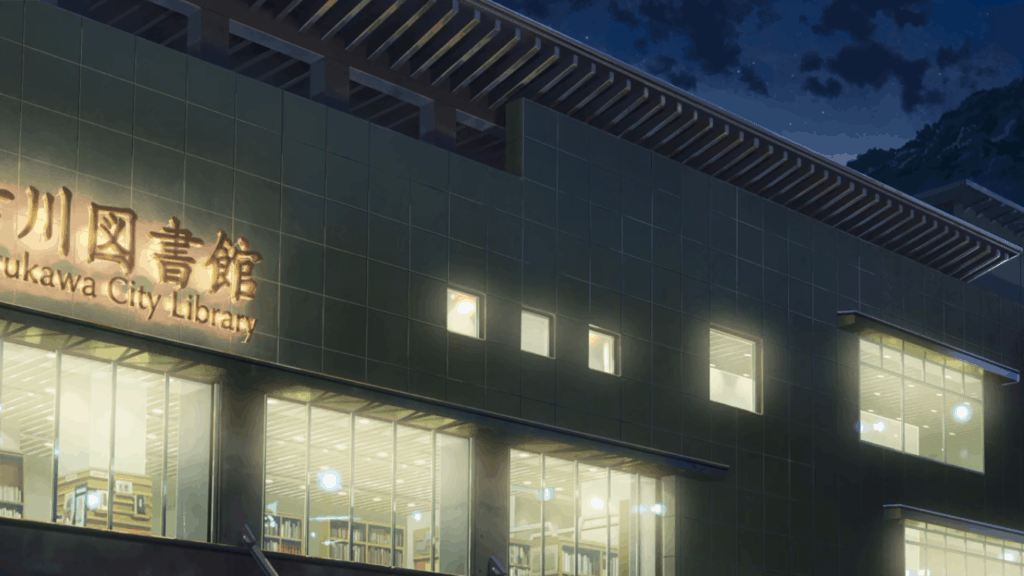
Not to stress the obvious, but stressing the obvious: the interior of the library is also faithfully depicted. It’s also worth noting that the library allows film pilgrims to take photos inside as long as they observe basic rules of courtesy. They should ask for permission first at the front desk and in no way disturb visitors by making noise, recording video, or taking photos of other library users. Basically, no one should forget that this place is still a library and as such, silence must be maintained in its facilities.
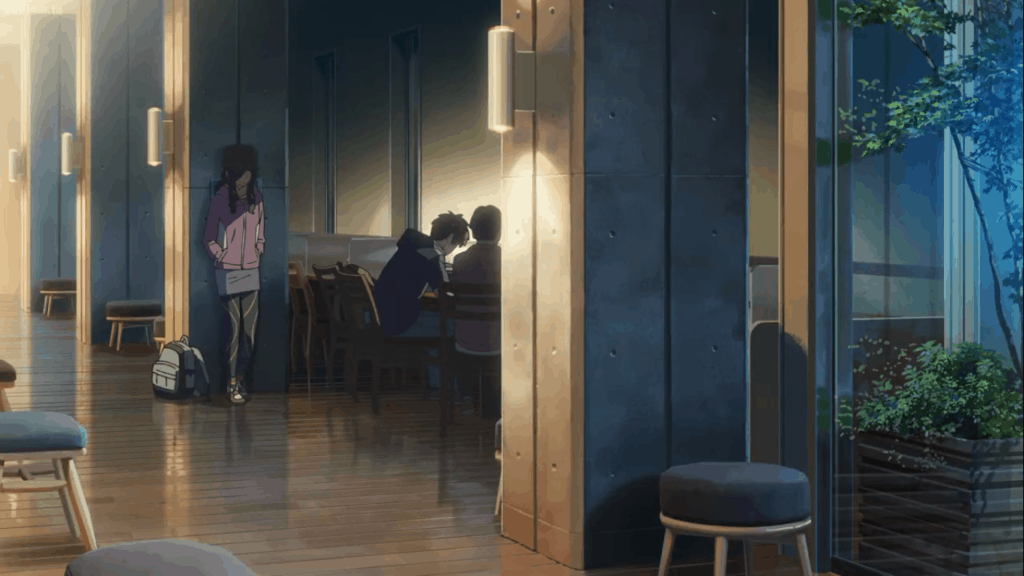
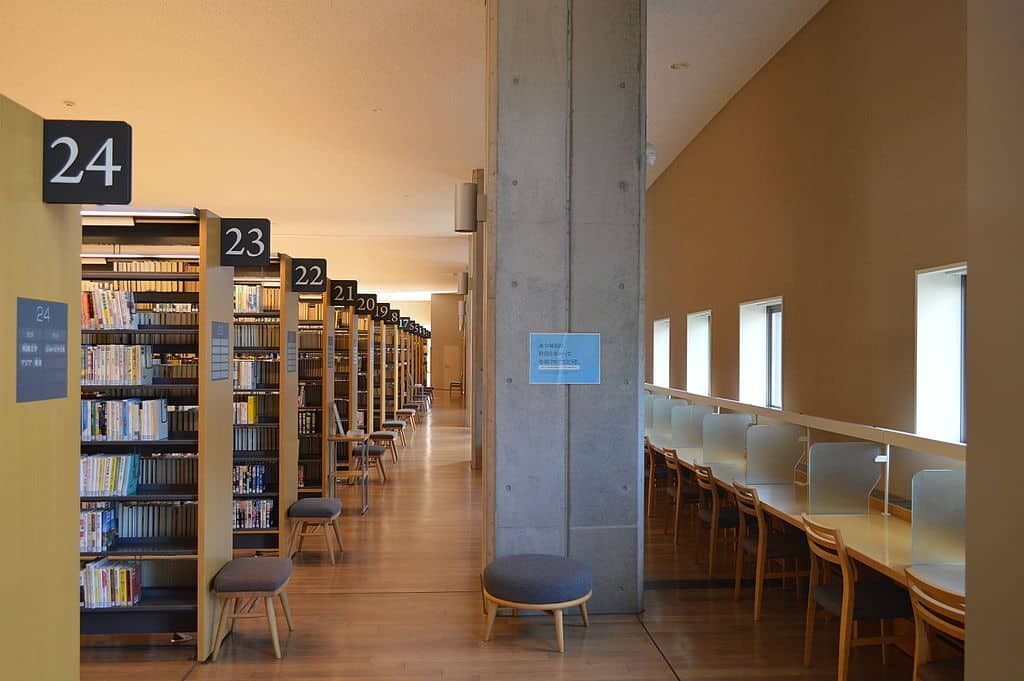
Fun fact, because there are no movie theaters in the region, the city inhabitants found themselves in the situation of not having anywhere to go to see the film that depicted their town with so much care and detail. After a series of citizen petitions to do something about it, the distribution company Toho authorized the film to be screened at a local cultural center with several sessions whose tickets were sold out just hours after going on sale.
Fictional Itomori station in Maeda-Minami
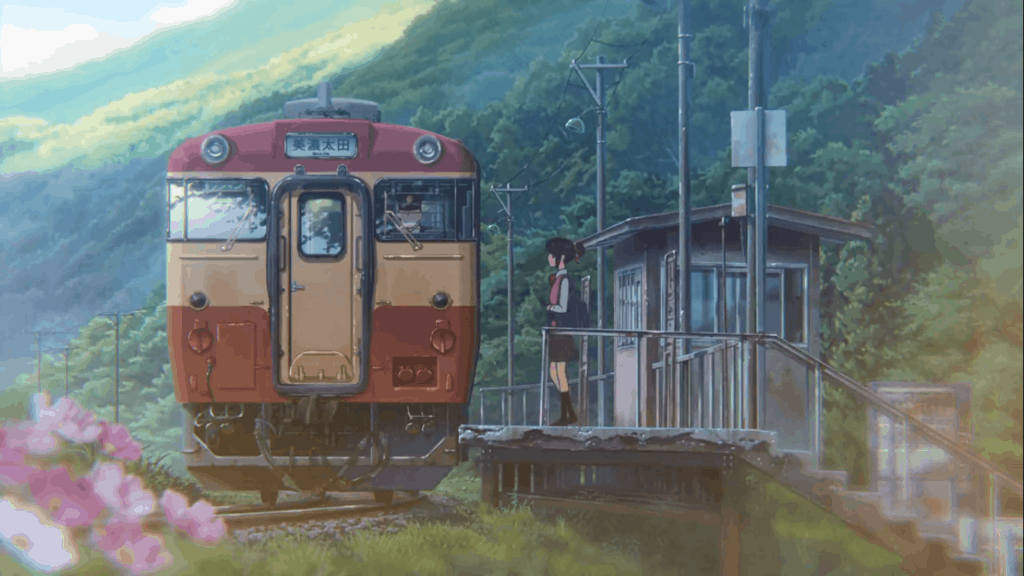
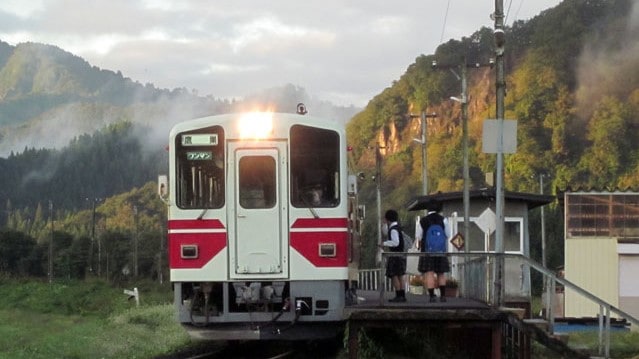
The town of Itomori may not exist, but as it turns out, its station does, but a few kilometers away, in Akita Prefecture. Maeda-Minami is the name of this remote station that anime pilgrims have catapulted to fame after being the inspiration for the station we see in the story.
Miyamizu Shrine
The shrine belonging to Mitsuha’s family is inspired by the torii gate and stairs of Hie Shrine in Takayama, famous for its spring festival.
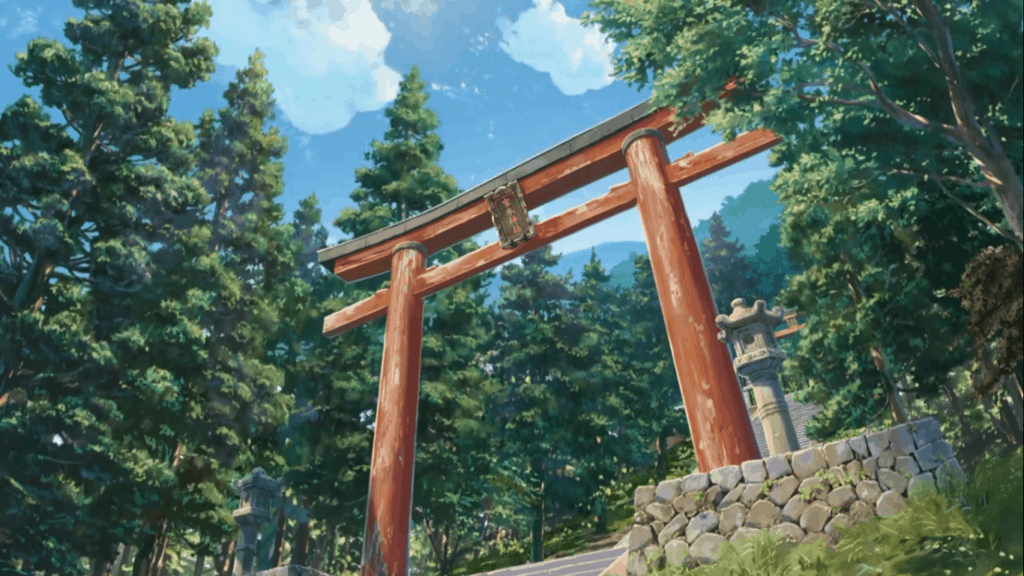
See an Authentic, Everyday Japan in Your Name
Outside of the fantasy elements of the story, virtually everything shown is very close to reality in terms of customs and usages. The ceremony in which Mitsuha dances at the shrine with her sister is part of her responsibilities as a miko (巫女). By the way, if you have the opportunity to witness one of these ritual dances, please refrain from taking photos or recording videos of the Miko as it is completely forbidden.
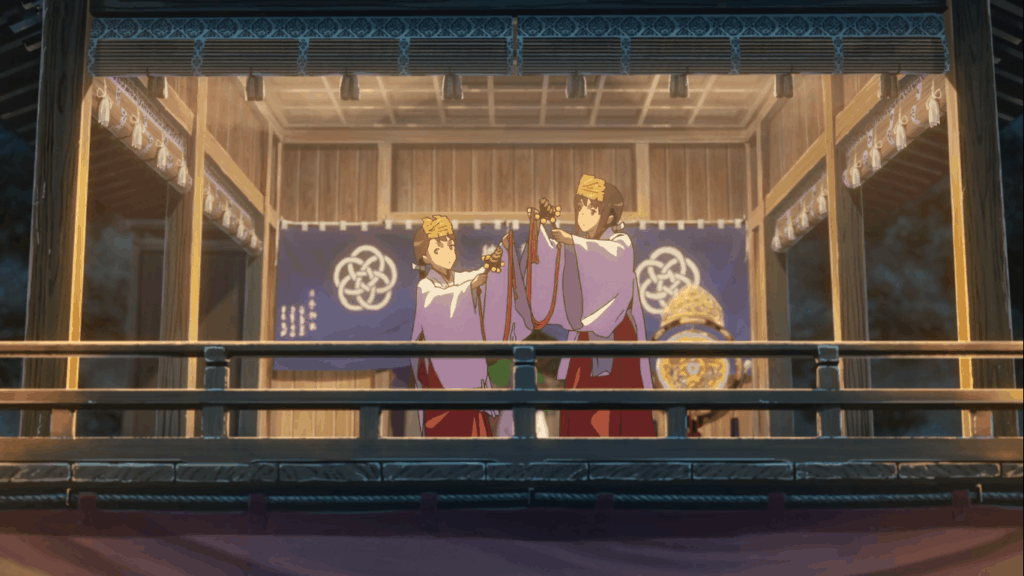
But beyond important cultural elements, there are also details that give us information about customs and gastronomy. For example, the little box with a meal that travelers eat on board the train is called ekiben (駅弁), a combination of eki (駅 – station) and bento (弁当 – boxes or cases with meals that can be purchased or homemade). Some train journeys can be quite long, so it is quite a common custom to carry or buy a bento at the station to eat as the characters do. Special mention of the chosen meal, which is a miso katsu, one of the most famous local specialties of Nagoya cuisine.
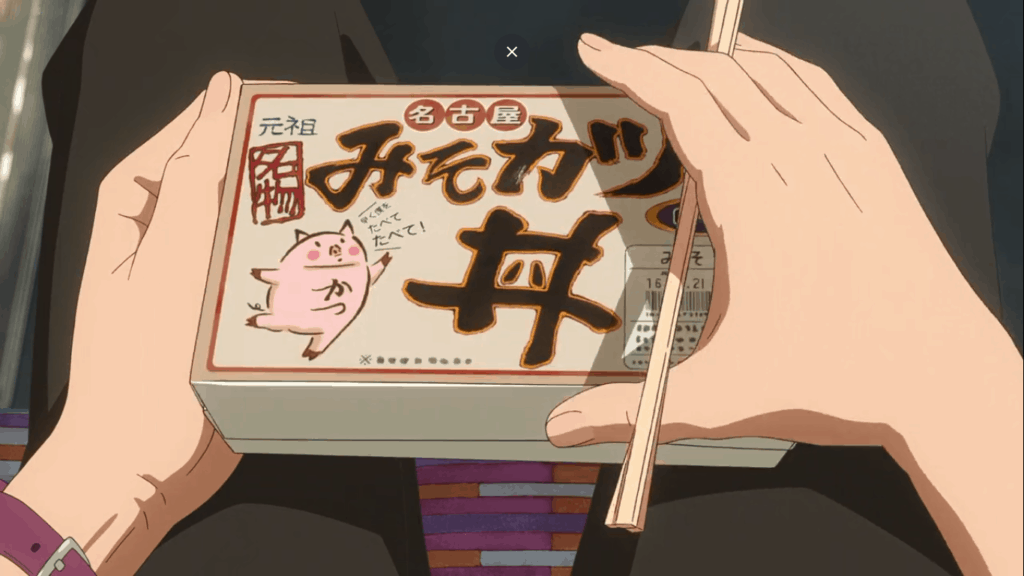
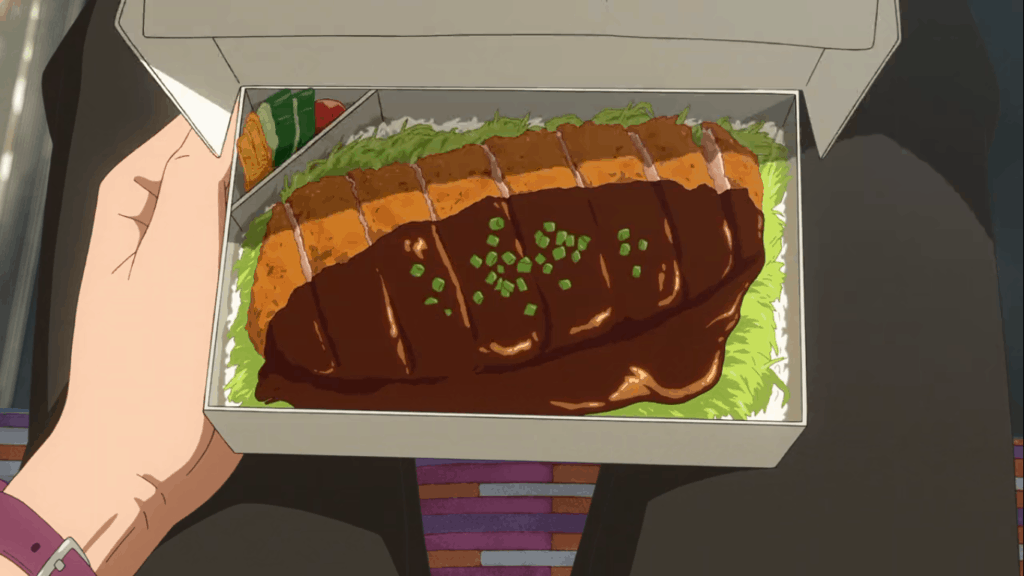
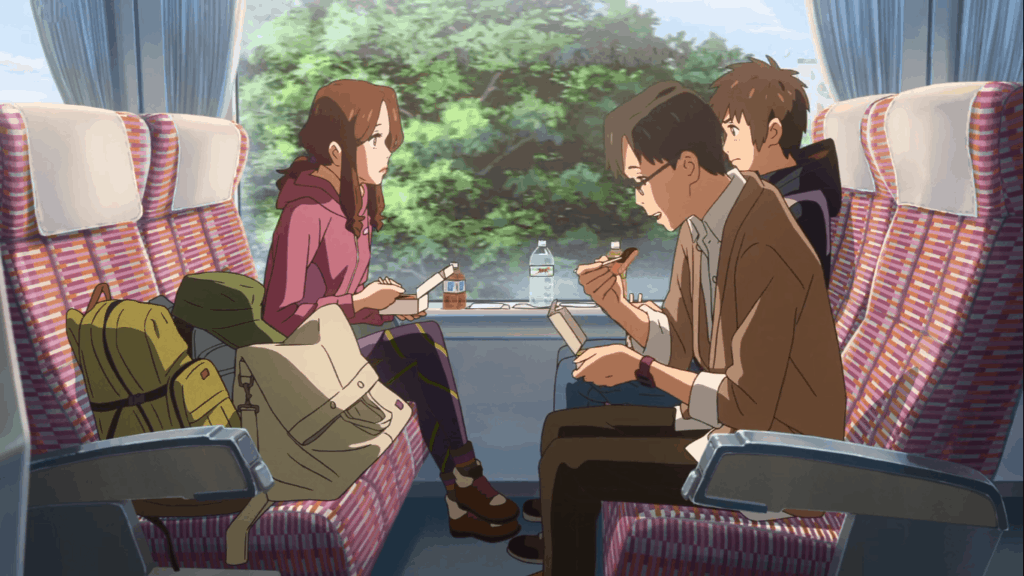
Speaking of gastronomy, another interesting detail can be seen when the characters arrive in Hida and find a cute bovine mascot, representing one of the most popular products of the region of beef. On the other hand, the snacks that Mitsuha’s friends are buying while they plan to save the villagers exist as they are, evidencing some of the brands that have sponsored this movie but it is also an opportunity for foreign audiences to see the kind of products that we can find in supermarkets or convenience stores.
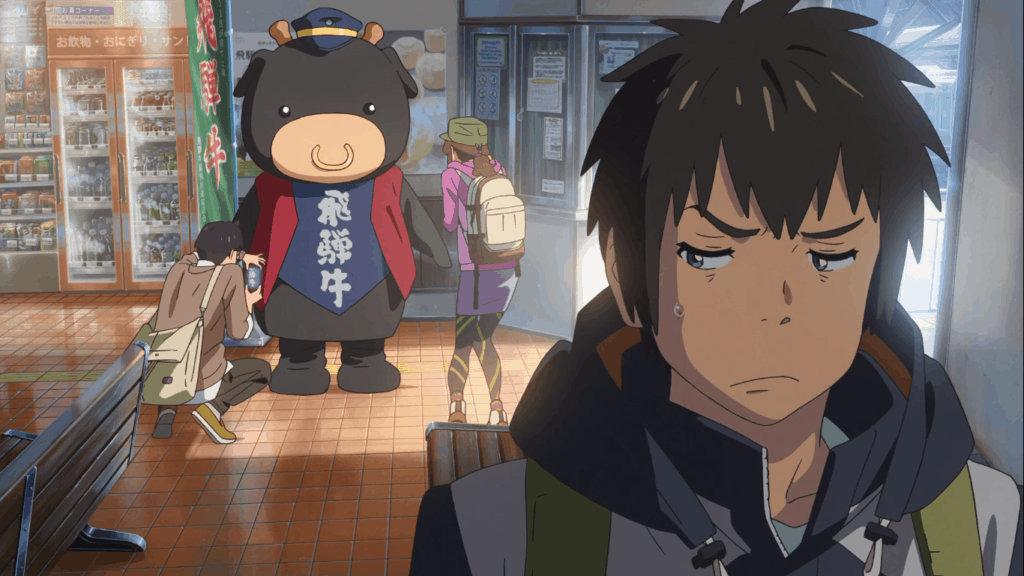
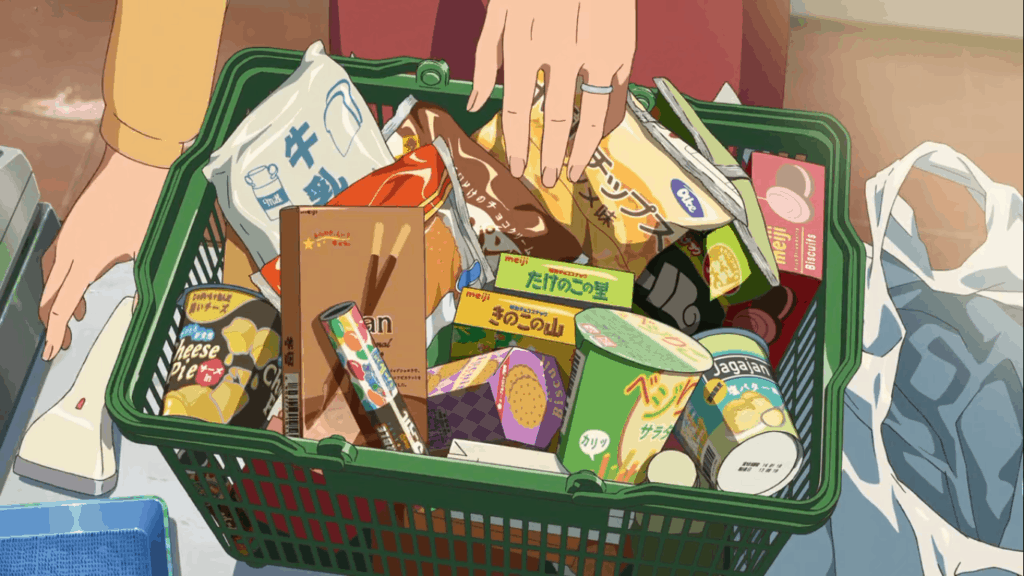
Another local product whose popularity has increased after its stellar appearance is gohei mochi, a specialty of the Chubu region consisting of baked mochi skewers coated in sweet soy sauce.

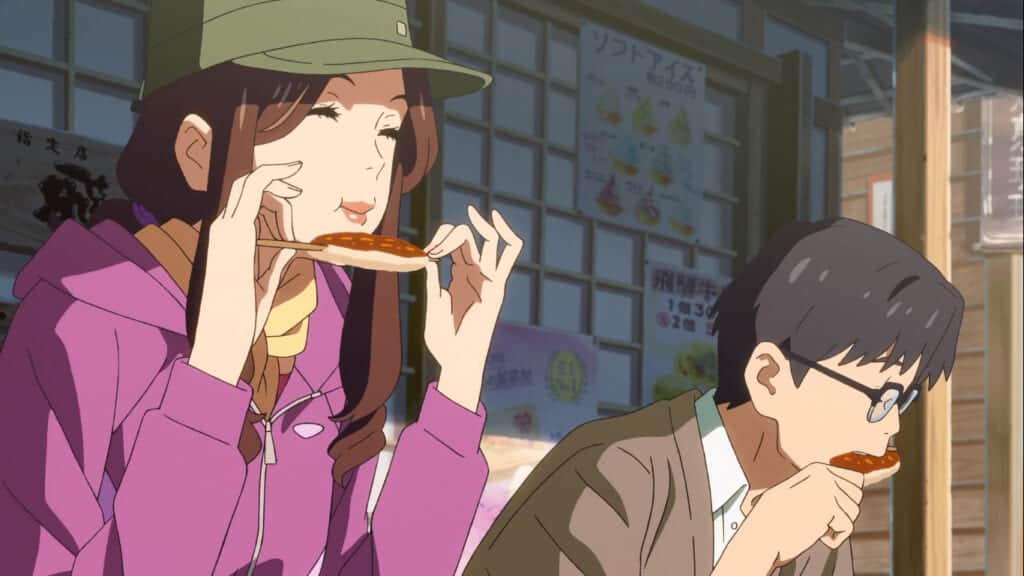
Where is it possible to watch the movie Your Name?
The immense worldwide popularity of this title means that it is not difficult to find streaming options in English. For instance, it is possible to watch the movie within the extensive Netflix anime catalog.
Your Name is a title that I strongly advise not to miss, for the few of you who may not have seen it yet, not only for the intrinsic value of the story, the quality of the animation, and the places that appear (which is no small thing) but also because it is an authentic window to everyday Japan, common and ordinary, through multiple representations of their daily lives.


